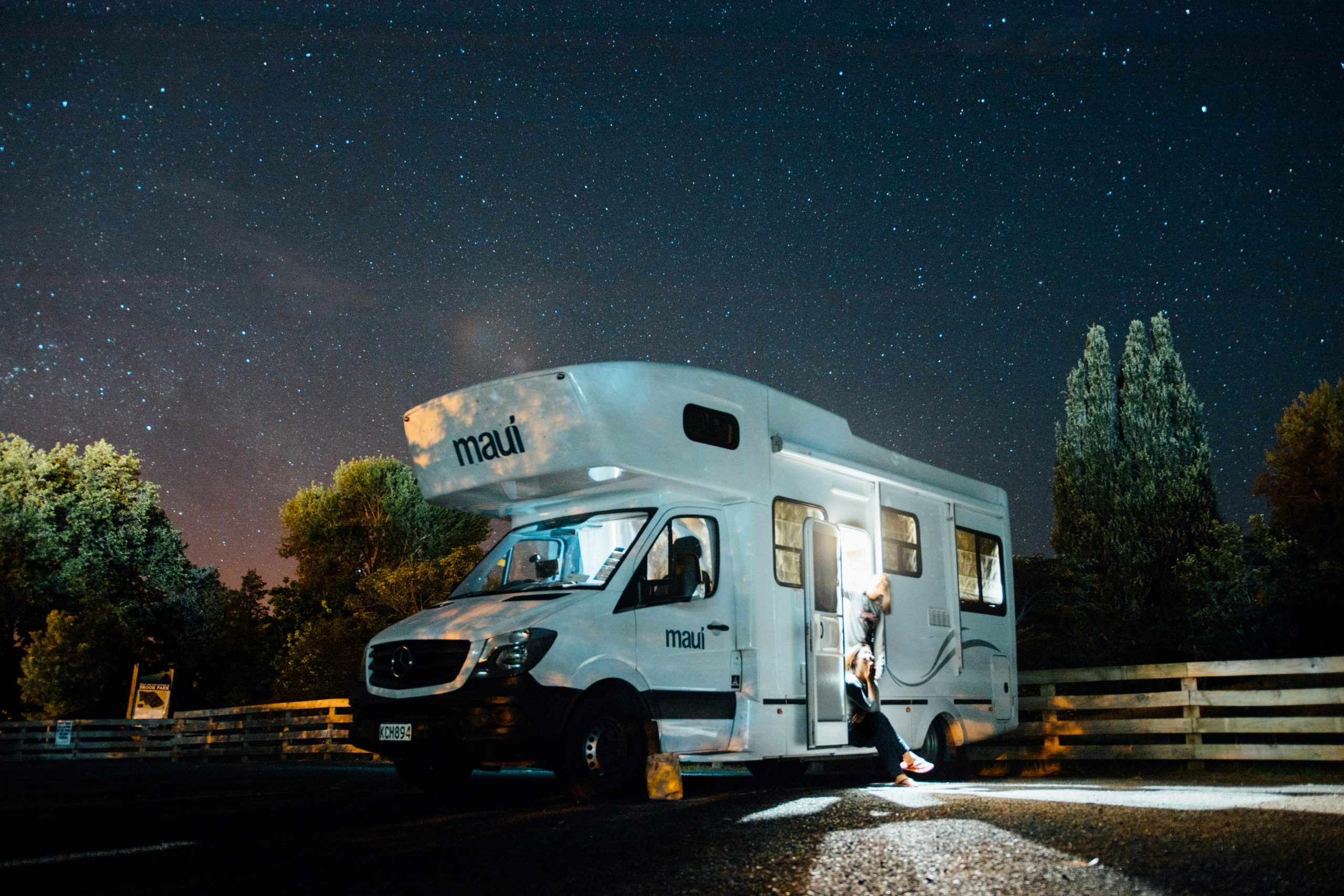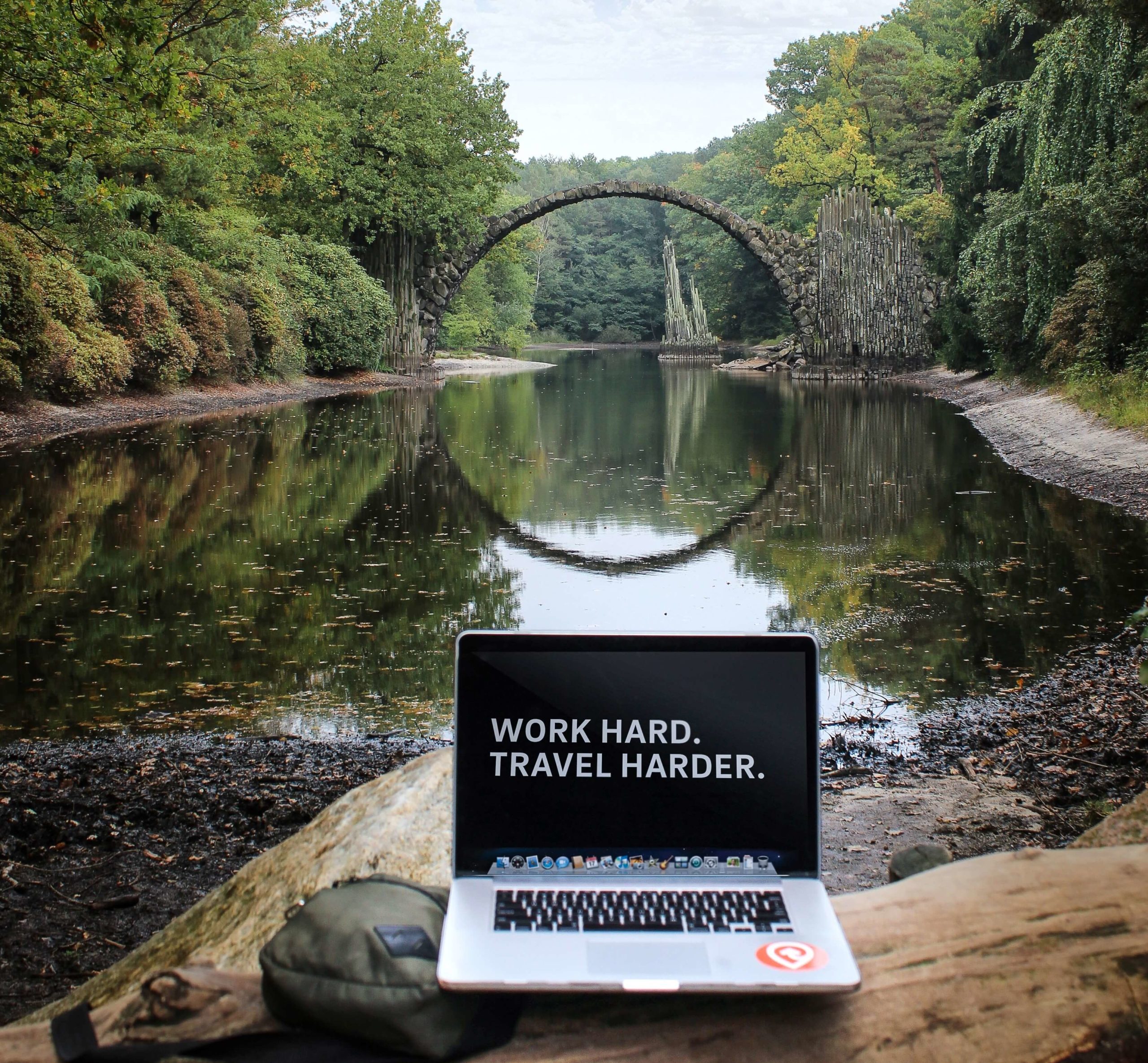Trade fluorescent lights for sunrises and sunsets. Find your dream RV office now.
If you are like many Americans, your work attire has morphed from business professional to mullet casual during the last four months. You heard me right: mullet casual. There is probably a good chance you’re wearing business clothes on the upper half of your body and some combination of last night’s pajamas or your favorite leggings on the bottom half of your body. It’s business on top and a party on the bottom.
You, my friend, are now the proud owner of the mullet. Don’t let this news upset your Achy Breaky Heart. All styles come and go, and although you vowed that the mullet would never see the light of day in your home again, you are rocking (and secretly loving) your Billy Ray Cyrus or Carol Brady business attire.
Certainly, the circumstances leading up to your mullet-casual wardrobe aren’t as hilarious as your holiday jammies paired with your white dress shirt and argyle tie. The COVID-19 pandemic sparked fear across the globe, and within weeks, ushered in a new normal for the workforce. Amid the fear, a positive realization emerged. As companies enforced the stay-at-home orders, it became clear to many organizations that work isn’t location-dependent.
In fact, companies across the country now embrace the idea of remote work. The outcome? Wannabe-digital nomads and gypsy souls are asking for the details on how to work remotely and travel at the same time — working while traveling means extending the possibility of wearing your sweet new work wardrobe year-round.

The Desire to Work Remotely and Travel
During the quarantine, instead of binge-watching Netflix, did you become addicted to YouTube channels that document the lives of digital nomads who live and work from their tiny trailers or decked-out motorhomes? Yes? Have you purchased or rented an RV to determine if the RV life is the life for you? Did you need a quiet work-from-home space, so instead of building a home office, you’ve turned your RV into your backyard-business sanctuary on wheels?
If you answered yes to any of these situations — or even pondered what working from the road might look like — perhaps it’s time to explore how to work remotely and travel in your RV at the same time.
RVs Are the New Office
Working from an RV isn’t a new concept, but it is becoming increasingly popular. Technology has made it possible for digital nomads to head to remote locations and still stay connected. Full time and even weekend warrior RVers have found ways to have the best of both worlds: jobs that allow the flexibility to work and travel simultaneously. If you have a stable internet connection, then it’s possible to work from the road or even from your own backyard.
Tips for Working on the Road
Working from the road isn’t always as glamorous as social media makes it seem, but once you find a work-travel balance, you will find that working as a digital nomad becomes easier. As with any new situation, it’s going to take time to pound out the kinks. Not every work situation is the same, but knowing tips on how to work remotely and travel before starting your new life on the road will help make the transition from office to RV a little less bumpy.

Create a Comfy Office Space Inside of Your Rig
You might have images in your head of what it would be like to have beach-front Zoom meetings or hours of working while nestled in the pine trees facing a mountain lake. Outdoor workspaces are glorious but not always realistic. Sun glare, bugs, and a variety of weather conditions might make it challenging to work outside for long periods, so it’s a good idea to create a comfy workspace inside of your RV.
- Set up a workspace somewhere other than your bed. Your body will thank you.
- Use a Bluetooth keyboard and mouse.
- Elevate your laptop or buy an external monitor to avoid long hours hunching over a small screen.
- Think about light sources in the RV, and adjust your desk area to avoid glare.
- Work facing the outdoors. If you can’t be outside, at least you can see what’s going on outside.
- Decorate your RV with items and colors that make you happy. You want the inside space to feel as cheery as your outside space.
Stay Organized
Even if you flourish in organized chaos, organizing your RV office space will help your workday run a little more smoothly. Your RV might be your working and living space, and organization is the key to finding harmony between the two worlds.
- Are you easily distracted, or will you work alongside someone else in your RV? Consider purchasing some noise-canceling headphones or using headphones with white noise to help block out distractions.
- Clean your space each time you sit down to work. Removing the clutter around you will help to declutter your mind, too. You might need to organize your work area a few times a day.
- Use a planner or online tool to help you stay organized if you have daily tasks you need to check off as you complete them.
- Have a place to store your workspace at the end of the workday if you don’t have a dedicated desk. It’s easier to stay organized and keep your workday more structured when you put away work once you’ve finished it for the day.
Set Realistic Work and Travel Expectations
It’s hard to balance work, play, and travel time, especially for newbie RVers. It’s imperative to set aside dedicated work hours; otherwise, you will find yourself working from sunrise to sunset. Working long hours without structure directly conflicts with why you probably set out in the first place. Setting realistic work and travel expectations is the key to figuring out how to work remotely and travel.
- Set aside dedicated travel days. Whether your travel days are long or short, most RVers will tell you travel days are exhausting.
- Find your driving comfort zone. For example, try out the 3:3 rule. Drive no more than 399 miles in a day, and plan to stop driving before three in the afternoon. Arriving at a new place after dark is very difficult for RVers. Parking and setting up in unfamiliar areas can often be a recipe for disaster.
- Do not expect to have a productive workday after driving more than a few hours. Planning to work after a long drive doesn’t work for most people.
- Plan for dedicated workdays, even if those days fall on a weekend.
- Allow time in your travel days for setting up or taking down your rig. Also, account for gas stops as well as time to dump or fill your tanks. A five-hour drive might quickly morph into seven hours when you add time for some of your essential duties.
- Stay in one place longer. If you work from the road, it’s easier to enjoy new areas when you stay put.
- Add time in your schedule for sightseeing, hiking, and other outdoor activities. Some RVers find if they don’t schedule their free time, it doesn’t always happen.
- Scout out your sleeping spot each night before you start driving. Hitting the road with no plan can end up disastrous. Even If you plan on sleeping in a free overnight parking area like the Cracker Barrel parking lot or a dispersed campsite, it’s best to know your sleeping location beforehand. Pulling off on the side of the road when you get tired and searching for the closest sleeping spot is frustrating, and more often than not, you lose precious rest time when planning your travel days that way.
- Schedule some flex time in your work or travel days to allow for unexpected events such as mechanical emergencies or illnesses.
- Use apps, club membership, and other online tools for scouting for safe or scenic places to stay.
Time Management Tools
- Help manage your scheduled work time by applying the Pomodoro Technique. Programs like the Tomato Timer help users balance work time and rest time.
- Use online task managers like Notion, MeisterTask, or Trello to help with time management.
- Use a paper planner or a bullet journal to track tasks and productivity.
- Practice time blocking until you figure out how to work remotely and travel at the same time
Road Work Ahead?
If you see the digital nomad lifestyle in your future, take our advice. A life of working remotely and traveling can take some adjusting, but it’s totally doable and absolutely worth it. Ready to take work on the road?









